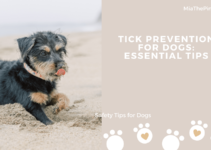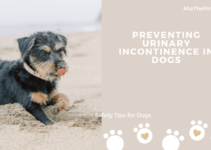Prevent Destructive Chewing: Essential Safety Tips for Dogs
Introduction: Understanding the Dangers of Destructive Chewing
Chewing is a natural behavior for dogs. It helps them explore their surroundings, relieve stress, and maintain healthy teeth and gums. However, destructive chewing can be a major concern for pet owners. Not only can it damage your belongings, but it can also pose serious health risks to your furry friend. In this article, we will delve into the root causes of destructive chewing and provide essential safety tips to prevent this behavior.
Identifying the Root Causes of Destructive Chewing
Before addressing the issue of destructive chewing, it is important to understand its underlying causes. Dogs may engage in this behavior due to boredom, anxiety, teething, or even nutritional deficiencies. By identifying the root cause, you can implement targeted strategies to prevent destructive chewing and promote a healthier lifestyle for your canine companion.
Creating a Safe Environment for Your Dog
One of the most effective ways to prevent destructive chewing is by creating a safe environment for your dog. Start by puppy-proofing your home, removing any potential hazards or tempting objects that your dog may be inclined to chew on. Keep electrical cords, toxic plants, and small objects out of your dog’s reach. Additionally, providing a designated space for your dog with appropriate chew toys can help redirect their chewing behavior.
Providing Appropriate Chew Toys and Alternatives
Chew toys play a vital role in redirecting your dog’s chewing habits. Opt for toys made of durable materials that are specifically designed for chewing. Avoid toys that can easily be torn apart, as they may pose a choking hazard. Additionally, consider offering a variety of textures and sizes to keep your dog engaged. Alternatives such as frozen treats or puzzle toys can also provide mental stimulation and satisfy your dog’s natural instinct to chew.
Training Techniques to Prevent Destructive Chewing
Training is an essential aspect of preventing destructive chewing. Start by teaching your dog basic commands such as “leave it” and “drop it.” These commands can be used to redirect your dog’s attention away from inappropriate chewing behaviors. Consistency and positive reinforcement are key when training your dog. Reward them with praise, treats, or playtime when they choose appropriate chew toys over household items.
Seeking Professional Help for Persistent Chewing Issues
If your dog’s destructive chewing behavior persists despite your best efforts, it may be beneficial to seek professional help. A veterinarian or a certified dog trainer can provide valuable insights and guidance tailored to your dog’s specific needs. They can help identify any underlying medical conditions or behavioral issues that may be contributing to the destructive chewing behavior. With their expertise, you can develop a comprehensive plan to address the problem and ensure the safety and well-being of your furry friend.
In conclusion, preventing destructive chewing in dogs requires a combination of understanding, proactive measures, and consistent training. By creating a safe environment, providing appropriate chew toys, implementing effective training techniques, and seeking professional help when needed, you can help your dog overcome destructive chewing habits and promote a happy and healthy life for your beloved pet.
FAQs
1. What are the root causes of destructive chewing in dogs?
Dogs may engage in destructive chewing due to boredom, anxiety, teething, or nutritional deficiencies.
2. How can I create a safe environment for my dog to prevent destructive chewing?
Puppy-proof your home by removing potential hazards and tempting objects. Keep electrical cords, toxic plants, and small objects out of your dog’s reach. Provide a designated space for your dog with appropriate chew toys.
3. What types of chew toys are recommended to redirect a dog’s chewing habits?
Opt for chew toys made of durable materials specifically designed for chewing. Avoid toys that can easily be torn apart, as they may pose a choking hazard. Offer a variety of textures and sizes to keep your dog engaged.
4. What training techniques can help prevent destructive chewing?
Teach your dog basic commands such as “leave it” and “drop it” to redirect their attention away from inappropriate chewing behaviors. Consistency and positive reinforcement are key. Reward your dog with praise, treats, or playtime when they choose appropriate chew toys over household items.
5. When should I seek professional help for persistent chewing issues?
If your dog’s destructive chewing behavior persists despite your efforts, it may be beneficial to seek professional help from a veterinarian or certified dog trainer. They can provide insights, identify underlying medical conditions or behavioral issues, and help develop a comprehensive plan to address the problem.


